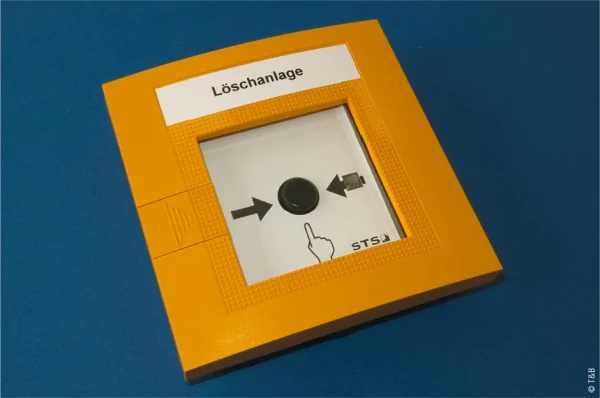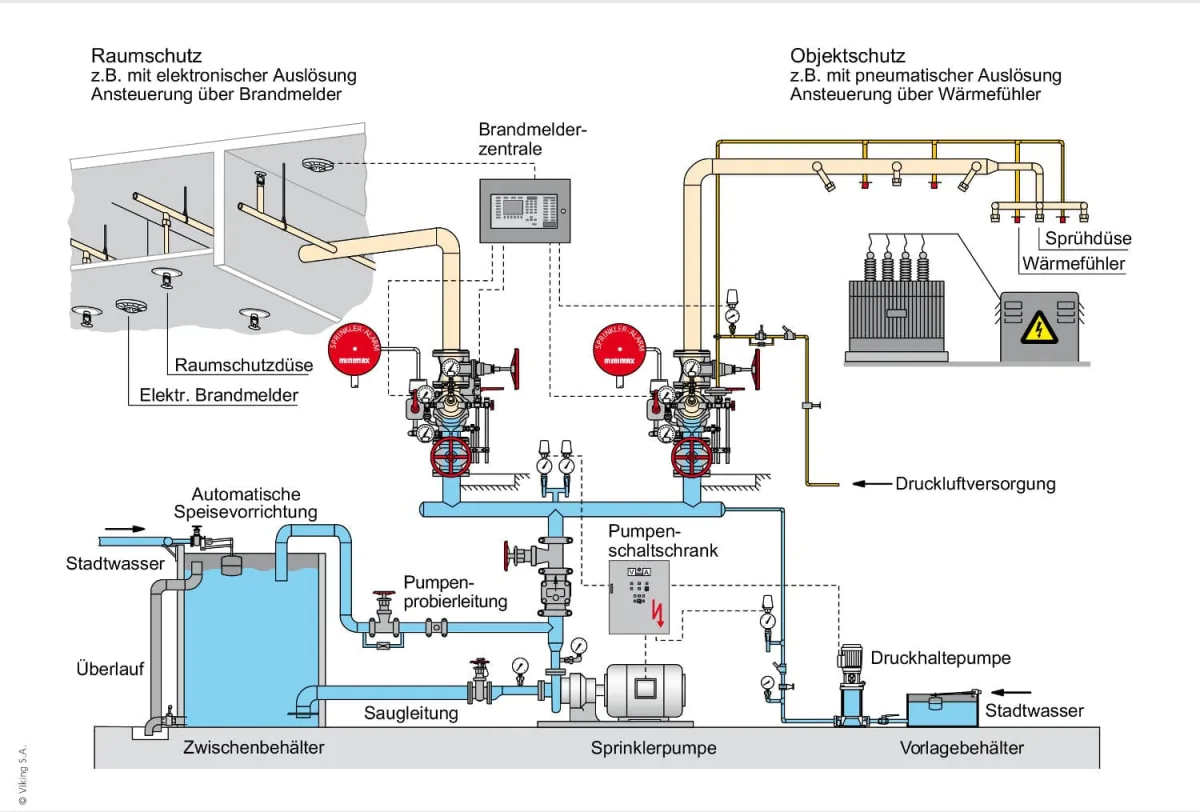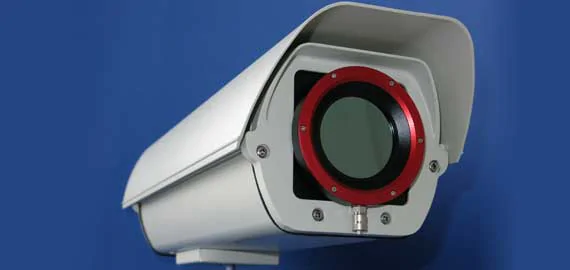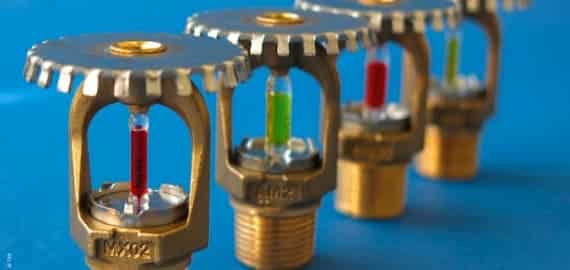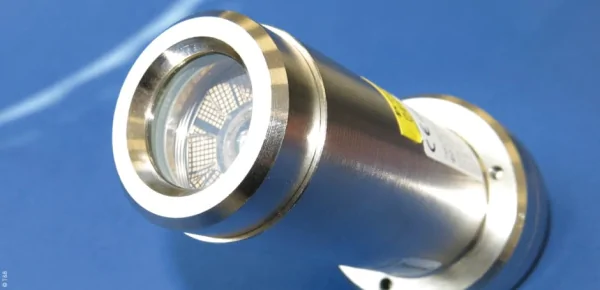Depending on local conditions and the level of fire hazard, fire detection is usually carried out using flame, smoke or heat detectors. Electric and pneumatic heat detectors can be used for this purpose:
- Flame detector for the detection of open flames;
- Smoke detector for smouldering fire detection;
- Thermal imaging camera with swivelling head for automatic monitoring of large areas;
- Pneumatic starting elements for triggering in the event of a sudden temperature rise.
Infrared thermal imaging cameras play an important role in locating the fire and automatically starting the appropriate extinguishing system that uses water spray.
To avoid false alarms, the alarm temperature should be set approximately 30°C above the maximum ambient temperature. This ensures accurate fire detection while minimising the possibility of the system being triggered by environmental factors.
The maximum area monitored by a single detector is always defined in accordance with the VdS 2095 directive.
Water spray extinguishing systems, working in conjunction with the detection systems described above, detect fires particularly quickly and distribute water evenly to all nozzles in the extinguishing zone. This quickly cools the burning material and removes heat from the surrounding air. In this way, the systems make it possible to extinguish fires quickly and safely, even in critical areas, preventing them from spreading.
In addition, electrically driven water extinguishing systems can be closed early, allowing the water supply to be quickly shut off once the extinguishment is complete, ensuring efficient and economical use of resources.
- Quick and safe prevention of fire initiation and spread, even in critical areas;
- The water spray fire extinguishing system can always be manually actuated;
- The extinguishing water flow rate is selected depending on the object to be protected in accordance with VdS 2109;
- A range of extinguishing nozzles are available for a variety of applications.
